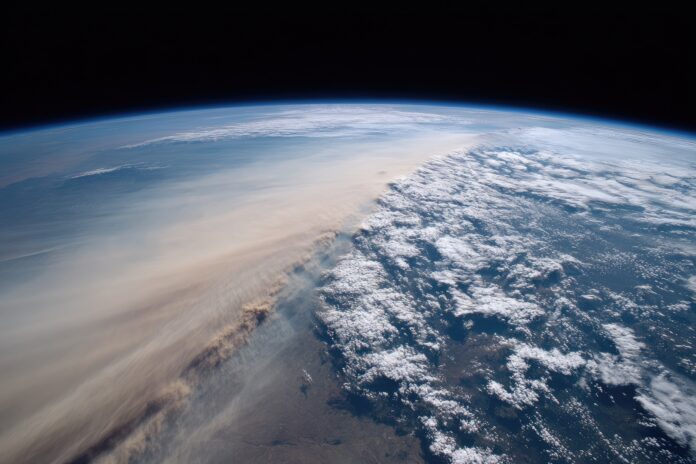Unveiling Earth’s Dynamic Atmosphere from Orbit
Dust clouds over Canada and the US have become a major focus for scientists aboard the International Space Station (ISS) this week. From June 2 to June 6, 2025, astronauts utilized the ISS’s unique vantage point to observe and track shifting plumes of dust across North America, gaining crucial data on environmental impacts and climate science[4].
What Are Dust Clouds and Why Do They Matter?
Dust clouds comprise fine particles—often soil, pollen, or pollutants—lifted into the atmosphere by wind, drought, and sometimes wildfires. Tracking these clouds is vital because they affect air quality, visibility, and even weather patterns. Over time, such dust can travel thousands of miles, influencing everything from crop health to human respiratory conditions in both urban and rural areas.
ISS Crew: Eyes on Earth
Because the ISS orbits the planet every 90 minutes, astronauts possess a unique opportunity to observe large-scale atmospheric events as they evolve. This past week, the ISS crew dedicated significant resources to monitoring the movement and development of dust plumes stretching from Canada’s prairies down over the American Midwest and Eastern Seaboard[5].
Why Did Dust Plumes Intensify in June 2025?
Environmental scientists suspect that an unusually dry spring, combined with higher-than-average temperatures and strong winds, contributed to the rapid escalation of dust activity. These conditions, tied to shifting climate patterns, increase the frequency and severity of dust events in this region. As a result, local communities may experience hazy skies, decreased air quality, and striking sunsets—a common visual marker of airborne particulates.
How Astronauts Track Dust Clouds
From aboard the ISS, crew members employ advanced optics, high-resolution cameras, and multispectral imaging devices to document and measure dust movement. Most importantly, astronauts collaborate with Earth-based scientists in real time, relaying data for live analysis and modeling. This synergy allows agencies like NASA to issue warnings, track public health risks, and refine climate models[2].
Key Observations and Initial Findings
During the period of June 2-6, astronauts noted several key phenomena:
- Large dust plumes rising from agricultural areas of southern Canada and northern US.
- Persistent wind patterns spreading the dust eastward, affecting cities under the path.
- Visible impacts on cloud formation and atmospheric transparency observed in ISS photography.
Such data not only inform immediate health advisories for affected regions but also add valuable records to long-term atmospheric studies.
Beyond the ISS: Global Climate Perspectives
Besides that, the work by ISS astronauts complements satellite-based observations, contributing to a fuller understanding of how terrestrial events like droughts and land management practices can influence airborne dust. Therefore, these insights allow agencies to refine forecasts and mitigation strategies, which are critical as climate extremes become more common.
Preparing for Incoming Crews and Future Research
While astronauts tracked these environmental events, preparations continued for the arrival of a new crew on the private Ax-4 mission, set for June 10. The dynamic research environment on the ISS ensures continuity: every visiting crew brings fresh expertise and advanced tools for ongoing Earth observation[4]. Most importantly, the ongoing analysis of dust plumes is expected to continue throughout June 2025, with findings likely shaping environmental planning and air quality guidelines for months to come.
Conclusion
The work aboard the ISS this week underscores the importance of orbital science in understanding Earth’s evolving environment. By tracking the vast dust clouds over Canada and the US, astronauts not only document the immediate impact of atmospheric events but also help forge pathways to better prediction and preparedness.
References
- Space.com – Astronauts track huge dust clouds over Canada and US
- BIS News – Astronauts track huge dust clouds over Canada and US
- Dark Site Finder – Astronauts track huge dust clouds over Canada and US



